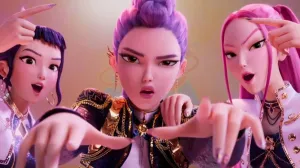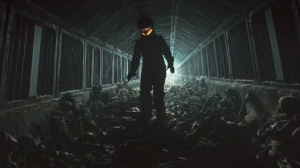Avengers: Infinity War and Avengers: Endgame both featured Thanos, the Mad Titan archvillain of the Marvel Cinematic Universe. Thanos, victorious in Infinity War, is killed by the Avengers early in Endgame. Later, a younger Thanos from another timeline threatens the Earth anew.
Videos by ComicBook.com
There are subtle differences in how the Thanos of 2014 compares to the Thanos who snapped half the universe away. ComicBook.com spoke to Matt Aitken, VFX Supervisor from Weta Digital, about those differences.
“He is kind of like a slightly different character,” Aitken says of the younger Thanos in Endgame. “But we did use the same base assets for both films. We spent a lot of time, obviously, on Infinity War working Thanos up. But then the Thanos that we see in Endgame is a younger Thanos. He’s come forward from 2014, so he’s… technically, I think he’s like four years younger than the Thanos of Infinity War. He’s more agile. He’s kind of at the peak of his physical prowess. And he’s also clothed differently. He’s wearing the armor. He’s in battle mode. We did the sequences on Titan for Infinity War where he was kind of dressed much more casually, and he’s more philosophical in those. So we had that work to do to kind of redress him in the armor. We wanted to reflect his youth and his power, mainly through animation. So that’s not so much a change that we make to the base asset, but it is a change that we make to the approach on how we’re animating him.”
Aitkens goes onto say that the biggest differences, and the biggest technical challenges, came from the motion capture and animations. “So obviously, we’re working off motion capture from Josh Brolin, and then the big fight sequences often we’re working off motion capture of stunt performers,” he says. “But at the same time, we need to take that captured motion and extend it through keyframe animation to really find Thanos in the performance. And the thing with Thanos is that he’s eight feet tall. He’s massive. He’s incredibly powerful. So there had to be a process of us layering Thanos on top of the motion that we did, off our motion capture from these more human-scaled performers. And so that’s what we call finding the body mechanic and the motion capture performance. And that’s a keyframe animation process.
“So there’s definitely that aspect of it, where we dial Thanos into the motion capture performance, we’re finding this new Thanos through that process. But there were also some technical changes we made to how he was set up, which was really not so much about making him a different Thanos, but just improving the Thanos that we had used from Infinity War. Because as we were working up the shots for Infinity War, we were identifying areas that if we had had time, we would’ve made these changes to just make him a little bit more sophisticated in the way that we were approaching him. We didn’t have time while we were working up the shots for Infinity War, but we took the time between the shows to include the… to do some work on the range of facial performance that we could get out of him, particularly around the corners of his mouth.
“We found that there was some more complexity that we could add to his rig there to get more nuances of performance. And we also did some work adding subtle detail to his overall facial performance to make it more complex and natural, and hopefully as a result more believable.”
What did you think of the two Thanos in Avengers: Endgame? Let us know in the comments.
Avengers: Endgame is now playing in theaters. Captain Marvel is also still playing in theaters. Upcoming Marvel Cinematic Universe movies include Spider-Man: Far From Home on July 2nd.








